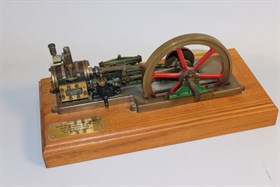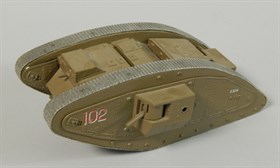Originally designed and made in the town, the tank holds huge significance for the city and is credited with pushing the First World War to its rightful conclusion. The items will be featured in the 150th Anniversary Auction at the Lincoln auction rooms of Golding Young & Mawer on Thursday, September 4th at 10am.
John Leatt said: "These days we take the tank's role in modern warfare for granted but 100 years ago, engineers were working flat out in Lincoln to create a weapon which could cross the trenches and help our soldiers win the war.
"This incredible piece of engineering has been commemorated in many forms over the years and we are delighted to be able to feature some of those items of memorabilia in our 150th Anniversary Auction.
"This collection will attract a great deal of interest from bidders interested in First World War memorabilia and militaria in general."
Among the 50 commemorative lots which were amassed by a local man, there are 16 items of crested porcelain ware, including The Whippet which was made by Lincoln engineering company Fosters, which are expected to sell for between £20 and £100 each. There is also a very fine one-inch scale miniature of a Robey's horizontal steam engine, which is a direct replica of an original made in 1895 and is expected to sell for between £300 and £600.

The Lincoln engineering company, William Foster and Co was well-known for developing an armoured fighting vehicle, known as the 'tank', during the First World War.

Before the war, the company specialised in agricultural machinery, such as tractors, threshing machines and steam engines. But with fighting in France reaching stalemate, the Admiralty Landship's Committee approached Fosters to put its engineering skills into developing a machine which could overcome the mud, cross trenches and barbed wire.
Managing director William Tritton, chief draughtsman William Rigby and engineer Walter Wilson, along with the loyal and highly skilled workforce, set to work to design and build the tank.
After one failed attempt, a tank named 'Mother' was created in 141 days and in 1916, the first tank saw action in France. The use of the tank had a huge effect on the war and is believed to have pushed it to its rightful conclusion.
The same sale includes a collection of three scale models of trawlers and other ships which would have been commissioned by the ship yard owners to show their customers what the ship would eventually look like.

